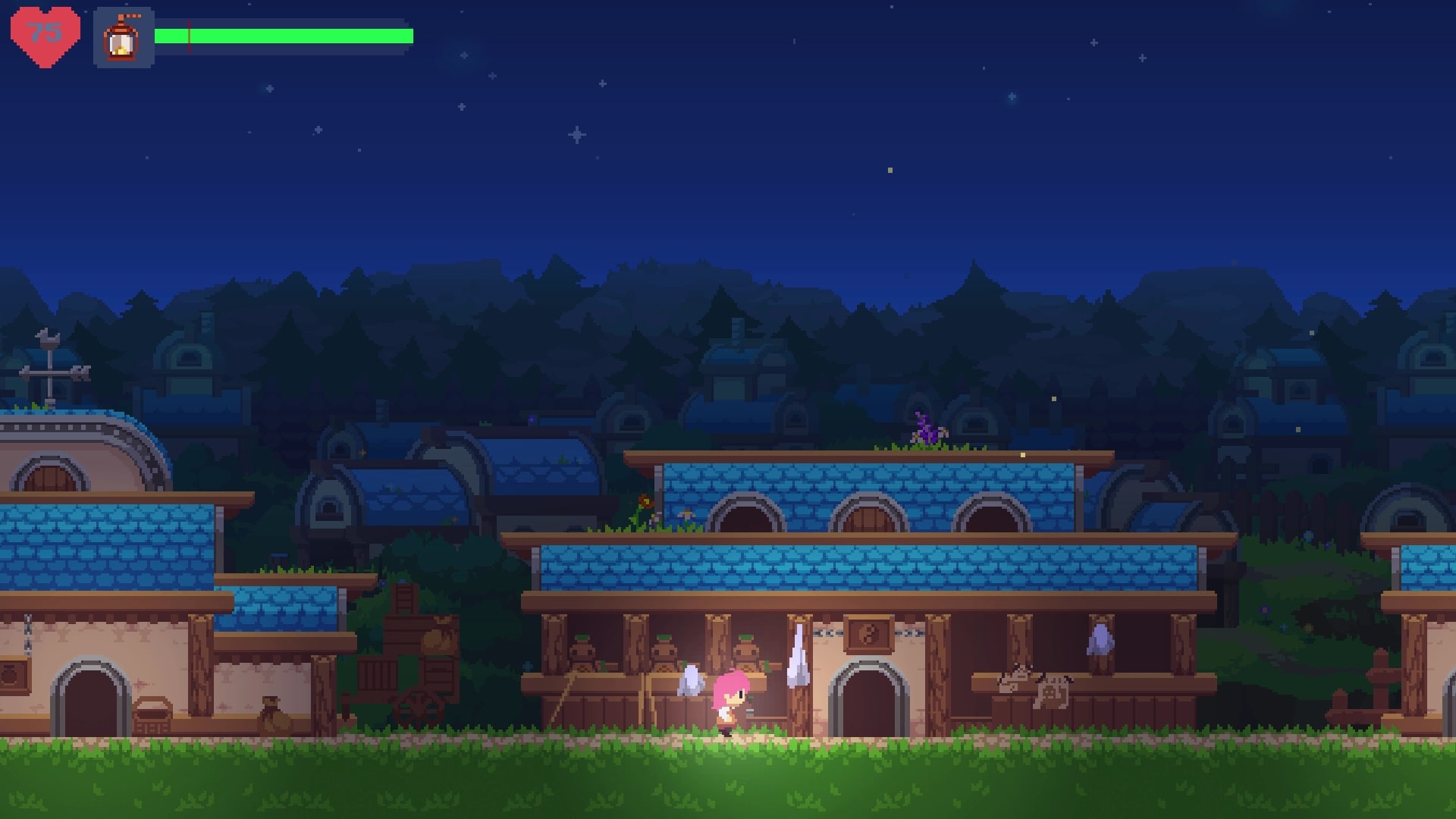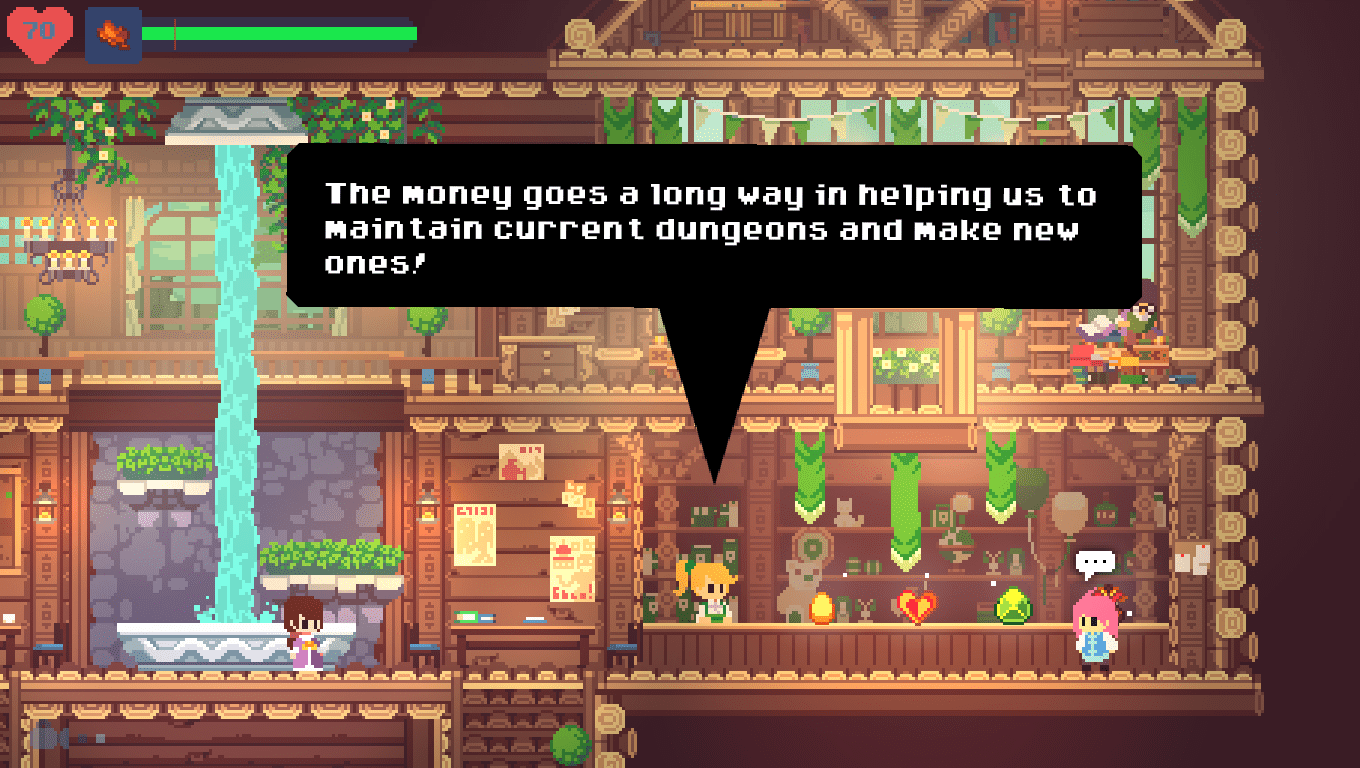

This is the most overarching stamina system I’ve seen in a game, and it hinders almost every action the player takes. This, unfortunately, is the deepest issue that Phoenotopia has. However, they’re a fickle element, as an unbalanced implementation can throw everything surrounding it out of alignment. Stamina systems can and often do inform gameplay. Often, a stamina system grounds the player in the world, offering a sense of weight and importance to each action. Like many games of its ilk, Pheonotopia employs a stamina system. The game gets so much so right, but falters on a mechanical level. That is imperative, and that is roundly achieved by Phoenotopia’s aesthetics, world design, and quest structure. You should become immersed in your quest. Puzzles, combat, exploration, it should all feed back into an overarching, empowering vibe of curiosity, wonder, and bravery. Speaking in the most reductive terms, the most important thing an adventure title needs to get right is in the genre’s name – promote a feeling of adventure. In many ways, the sum of Phoenotopia’s parts is a game that, above all else, promotes the sense and spirit of adventure through compelling design. Phoenotopia will prod the player in the right direction, but these nudges rely on the player’s ability and willingness to truly engage with the world, which is a commanding achievement. Taking the agency to carefully explore, converse with NPCs, and grapple with a problem will often result in deeply rewarding outcomes. The true success comes from the ways in which its quests have multiple routes forward. The are often elegant and well-executed, but they’re fairly rote. Sure, it has simple intuitive environmental puzzles scattered between its overworld and dungeons. It promotes careful exploration and problem-solving. To add another layer of design success into the mix, the world of Pheonotopia is intelligent.
Phoenotopia awakening Patch#
Then, the more unique ones, such as a larger-than-life sunflower patch and bee-themed village, succeed both on that base aesthetic level, and then on a deeper, intrinsic level. While some play into more traditional tropes, such as the forest area or the desert area, they’re always propped up by the visuals and sound. The world is comprised of locales that are inventive and compelling.

The world is not only successful in evoking a sense of adventure from an aesthetic standpoint, but also from a gameplay one. From the moment Gail begins her quest, I was roundly captivated by the presentation of Pheonotopia. The world is bathed in a soft, pastel palette and animated with a lot of care. That feeling is further bolstered by Phoenotopia’s elegant, lively pixel artwork. The entire game exudes a sense of youthful adventure, one that is elevated by that score. It nicely reflects the narrative, which puts you in control of a young girl named Gail, forced into a plot beyond the scope and scale of her years. The music feels grandiose, yet quaintly whimsical.

Usually I’m drawn first to the discussion of visuals, but it is really the score of Pheonotopia that is uniquely compelling. Perhaps its most blanket achievement is its aesthetic and world, which is one of the most inviting and adventurous on Nintendo Switch. A World Worth Exploringįrom a macro standpoint, Phoenotopia does a lot right. It’s a compelling quest that succeeds in broad strokes, but falters on its finer mechanical points, resulting in an experience that somewhat misses the mark. To that point, Phoenotopia Awakening is a side-scrolling adventure title with a top-down overworld – one replete with secrets, puzzles, combat, and exploration in equal part. That is exactly what Cape Cosmic’s newest title, Phoenotopia: Awakening does. What’s far less expected is to see inspiration taken from the franchise’s black sheep, The Legend of Zelda II: The Adventure of Link. In the realm of these experiences, inspiration is usually drawn from the likes of A Link to the Past and Ocarina of Time.

We all have a few under our belt games that feel staggeringly similar to Link’s exploits while remaining compelling by merit of borrowing from Nintendo’s formula so well. While not as common, there are many instances of developers drawing explicit inspiration from this franchise, creating – reductively speaking – Zelda clones. It’s just as likely to see Zelda’s DNA implicitly inform modern game design in more subtle ways. Often, this manifests itself in Zelda’s inventions that have become staples, such as Z-Targeting being absorbed into other games. It is very easy to feel and see the ways in which the Legend of Zelda’s influence has reverberated through the industry.


 0 kommentar(er)
0 kommentar(er)
